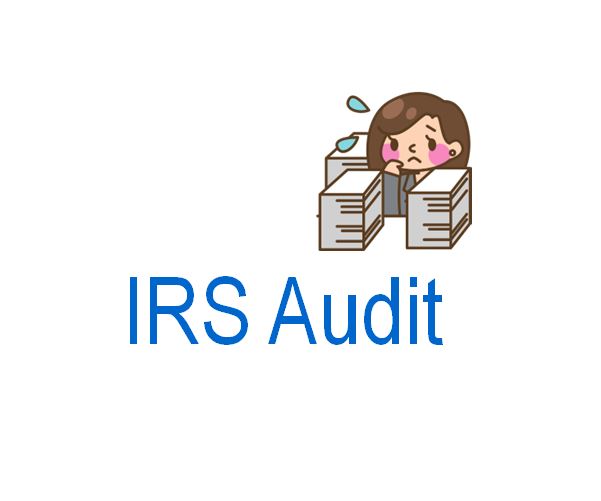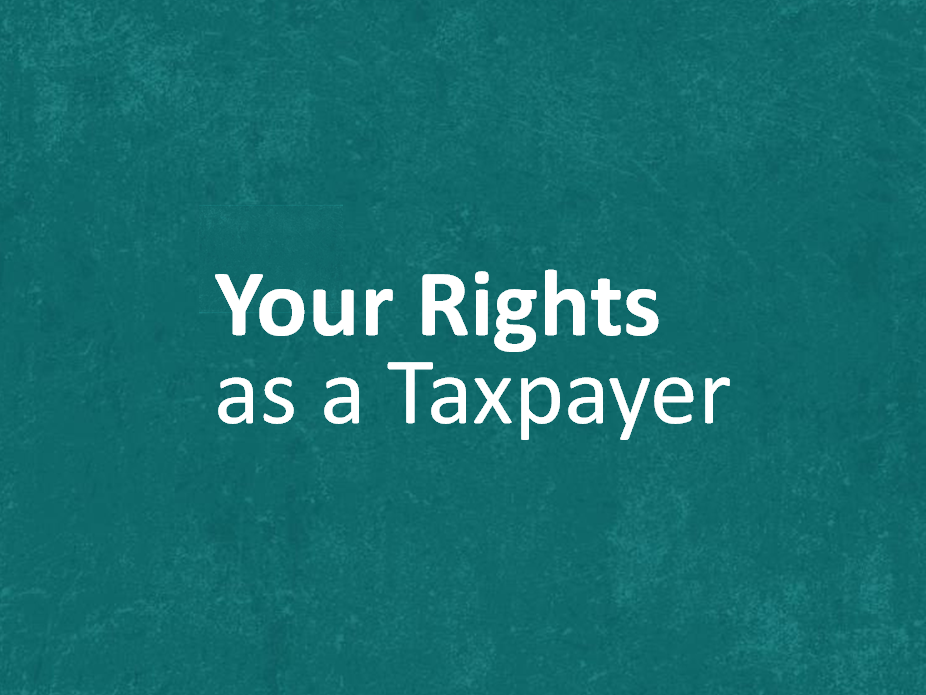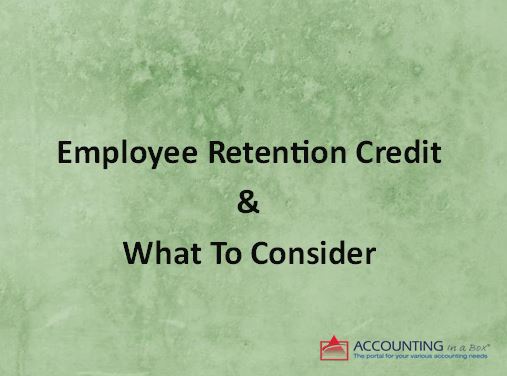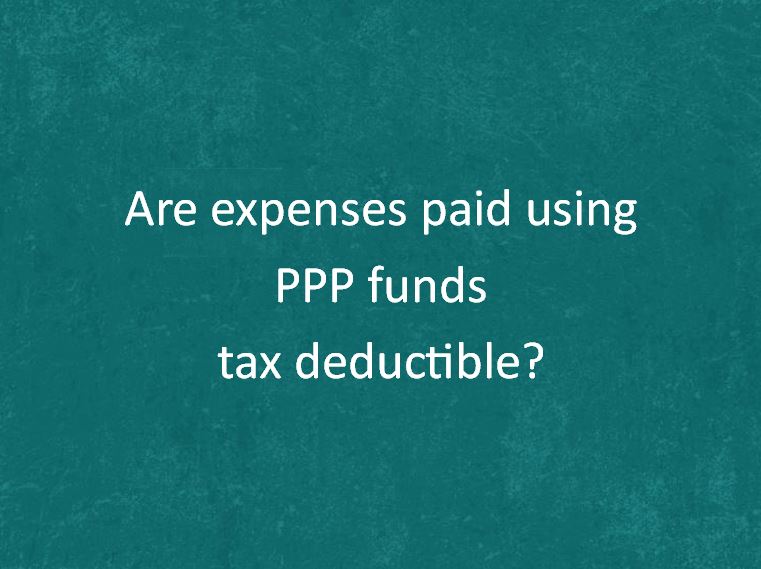IRS Audits
Here’s what you should know about an IRS audit:

- The IRS generally has three years from the date taxpayers file their returns to assess any additional tax for that tax year. Thus, if the IRS audits you, the audit would likely occur within 3 years from the date your tax return was filed.
There are some limited exceptions to the three-year rule, including when taxpayers fail to file returns for specific years or file false or fraudulent returns. In these cases, the IRS has an unlimited amount of time to assess tax for that tax year.
- If following an audit, the IRS determines you owe additional taxes, you will receive a statutory notice of deficiency. This is a letter proposing additional tax the taxpayer owes. This notice must include the deadline for filing a petition with the tax court to challenge the amount proposed.
- The IRS normally has 10 years from the assessment date to collect unpaid taxes. This 10-year period cannot be extended, except for taxpayers who enter into installment agreements, or the IRS obtains court judgments.
There are circumstances when the 10-year collection period may be suspended. This can happen when the IRS cannot collect money due to the taxpayer’s bankruptcy or there’s an ongoing collection due process proceeding involving the taxpayer.
Source: IRS
Does the IRS pay interest on refunds?
Normally, the IRS is required to pay interest on a refund if the refund is issued after a statutory period. By law, the interest rate on both overpayment and underpayment of tax is adjusted quarterly.
The IRS announced this week that interest rates will increase for the calendar quarter beginning April 1, 2022. The rates will be:
• 4% for overpayments (3% in the case of a corporation);
• 1.5% for the portion of a corporate overpayment exceeding $10,000;
• 4% for underpayments; and
• 6% for large corporate underpayments.
Taxpayer Rights
In the event you need to work with the IRS on a personal tax matter including, but not limited to, filing a return, paying taxes, responding to a letter, going through an audit or appealing an IRS decision, you can expect the following rights:

1. The Right to Be Informed
2. The Right to Quality Service
3. The Right to Pay No More than the Correct Amount of Tax
4. The Right to Challenge the IRS’s Position and Be Heard
5. The Right to Appeal an IRS Decision in an Independent Forum
6. The Right to Finality
7. The Right to Privacy
8. The Right to Confidentiality
9. The Right to Retain Representation
10. The Right to a Fair and Just Tax System
Source: IRS Publication 1
Earn-outs in Selling Your Business
What is an earn-out?
An earn-out is a contingent portion of the purchase price of an acquisition determined post-closing based on the target company’s performance against certain contractually defined criteria or benchmarks.

Typically, payments to the seller would be structured so that part of the purchase price will be paid at closing, followed by a further payment or series of payments depending on the profits made by the target company.
Why do parties utilize earn-outs?
It is an effective negotiating tool when differing perspectives on value or future prospects and profitability of the target company exist. It can be used in situations where there are limited historical operations, unproven product, new market, etc.
Advantages of an earn-out
An earn-out can have advantages for both the buyer and the seller.
From the seller’s perspective:
- Seller may be able to have the full benefit of selling a profitable business and not have to discount the purchase price as result of the buyer doubting the value of the target company.
- Seller can participate and contribute to future growth of the target business.
- Can be advantageous in difficult economic climates, uncertain events such as Covid.
From the buyer’s perspective:
- Protect against overpaying and uncertainty.
- Reduces cash required at closing and also reduces the buyer’s reliance on being granted a loan.
- The seller will be motivated to stay on in the business and maximize profitability and performance, which may also assist with client transition and retention.
Disadvantages of an earn-out
Although using an earn-out arrangement can help move a transaction forward, there may be some risks associated including:
-
- Prevent seller from achieving a clean break after the transaction.
- Difficulty of administration post-transaction.
- Challenges of negotiating for all contingencies.
- Fear of post-acquisition disputes.
When deciding on an earn-out arrangement, careful consideration should be given to ensure the earn-out arrangement is well structured and minimize the risk of problem arising (i.e. clearly define the extent of control to be retained by the seller, the length and timing of the earn-out period, the definition and method for calculating ‘profit’, etc.).
Valuing earn-outs is also a complex area that requires extensive analyses. Valuation professionals need to take into consideration various important factors such as what discount rate should be used, scenarios of payments and any new risks that may not be readily apparent at the acquisition date.
Are business owner wages qualified for Employee Retention Credit?
A few weeks ago, Forbes published an article highlighting the fundamental misunderstandings about the Employee Retention Credit (ERC) and the reason why small and mid-sized businesses are missing out on billions of dollars. The latest guidance that the IRS issued last week illustrates how confusing this tax credit is and why many CPAs and business owners are still leaving money on the table.

Generally speaking, the Employee Retention Credit was established to help employers whose operations were suspended, either partially or fully, by a government order due to COVID-19, OR had a significant decline in gross receipts, OR began carrying on business after February 15, 2020. This credit provides up to $5,000 per employee, per year for 2020, and up to $7,000 per employee, per quarter for 2021. ERC is very different from PPP. While PPP was carried out via banks, ERC is a tax credit, which can be claimed via tax forms.
The rules around ERC are complicated. One of the common questions being asked is whether wages paid to a business owner and the owner’s spouse may be treated as qualified wages for purposes of ERC. The answer from the IRS’s latest guidance may surprise you.
The IRS notice 2021-49 states as follow:
“The Treasury Department and the IRS have been asked whether wages paid to an employee who owns more than 50 percent (majority owner) of the value of a corporation may be treated as qualified wages, as well as whether wages paid to a spouse of a majority owner may be treated as qualified wages.”
and
“Applying the rules of sections 152(d)(2)(A)-(H) and 267(c) of the Code, a majority owner of a corporation is a related individual for purposes of the employee retention credit, whose wages are not qualified wages, if the majority owner has a brother or sister (whether by whole or half-blood), ancestor, or lineal descendant. That is, applying the constructive ownership rules of section 267(c), the direct majority owner’s ownership of the corporation is attributed to each of the owner’s family members with a relationship described in section 267(c)(4); further, because each of those family members is considered to own more than 50 percent of the stock of the corporation after applying section 267(c), the direct majority owner of the corporation would have a relationship as defined in section 152(d)(2)(A)-(H) to the family member who is a constructive majority owner. Therefore, the direct majority owner is a related individual for purposes of the employee retention credit.”
and
“In the event that the majority owner of a corporation has no brother or sister (whether by whole or half-blood), ancestor, or lineal descendant as defined in section 267(c)(4) of the Code, then neither the majority owner nor the spouse is a related individual within the meaning of section 51(i)(1) of the Code and the wages paid to the majority owner and/or the spouse are qualified wages for purposes of the employee retention credit, assuming the other requirements for qualified wages are satisfied.”
Per this guidance, to answer the question whether wages paid to a business owner are qualified wages for ERC, one needs to look into whether the business owner has any brothers, sisters, ancestors or lineal descendants.
We do not know if this is the IRS’s conclusion on this matter. We will update this article if the above guidance is withdrawn or a new relevant guidance is issued.
For more information, contact Dao CPA, PC, member of Accounting in a Box.
See previous article on this ERC topic.
Reference: IRS’s Notice 2021-49
**DISCLAIMER The information provided in this article is for informational purposes only. It may be time sensitive and changed after publication. It is indicative only and non-exhaustive. It does not constitute professional advice, nor should it be considered a substitute for advice on your specific situation from your advisors.
**Updated on 08/19/2021
How often should you update your business valuation?
Any private company that issues equity-based compensation to U.S. employees (and advisors) would need to comply with Section 409A of the U.S. Internal Revenue Code, which essentially requires, among other things, that stock options and other equity incentives issues are not priced below fair market value when issued.

How often do companies need to update their 409A valuation? A new 409A valuation must be performed whenever there is a material corporate event, including:
- Issuing employee stock options or shares for the first time
- Raising a round of funding
- Turnover of significant employees in leadership positions
- Any significant change to business operations or plans
- Generating first revenue or achieving profit
- A previous 409A valuation is over one year old
Non-compliance with 409A can expose both companies and their U.S. employees (and advisors) to significant tax penalties including a 20 percent federal income tax penalty and varying state tax penalties.
For more information, contact Aspen Valuations Inc, member of Accounting in a Box
Employee Retention Credit (ERC) and What To Consider
Per a recent survey conducted by AICPA, 12% of respondents planned to take advantage of Employee Retention Credit (ERC) while 24% planned to apply for a PPP loan in 2021. Why has ERC become so popular?
There are many rules associated with the ERC. Because of its complexity and broad coverage, we do not cover all aspects of the relevant provisions in this article, but rather highlight some of the core characteristics of the program.

Tax Credit Amount:
Year 2020: Up to $5,000 per employee, per year.
Year 2021: Up to $7,000 per employee, per quarter.
Refundability:
Employee retention credit is refundable. It can also be used to offset future payroll taxes.
Factors to Consider:
The tax credit amount and refundability makes ERC a generous program. However, before applying for the ERC, there are factors that one should take into consideration. Some of these factors are:
– Denial of double benefits.
– Denial of wages paid to related individuals.
– Reduced deduction of wages.
– Potential higher tax bracket due to reduced deduction.
– Five-year statute of limitations (increased from three years)
Eligibility:
Generally speaking, the Employee Retention Credit provisions were designed to help employers whose operations were suspended, either partially or fully, by a government order due to COVID-19 OR had a significant decline in gross receipts OR began carrying on business after February 15, 2020.
There are specific criteria that a business needs to meet to be eligible for the ERC.
For more information, contact Dao CPA, PC, member of Accounting in a Box.
**DISCLAIMER The information provided in this article is for informational purposes only. It may be time sensitive and changed after publication. It is indicative only and non-exhaustive. It does not constitute professional advice, nor should it be considered a substitute for advice on your specific situation from your advisors.
How small businesses can benefit from the recent COVID-related Tax Relief Acts
***UPDATE***
The Consolidated Appropriations Act, 2021 (Act) was signed into law on Sunday December 27, 2020. The American Rescue Plan Act was enacted on March 11, 2021. These two bills contain many changes and updates to the previous relief bill for COVID-19, and it would be impossible to cover all of them in one article. In this post, we aim to highlight a few of the provisions of the bills that would be of interest to small businesses:

1. Expenses paid using forgiven Paycheck Protection Program (PPP) funds are tax deductible. The Act reverses the IRS’s previous guidance and permits taxpayers to deduct the expenses paid with the PPP loan proceeds to the extent they would otherwise qualify as ordinary and necessary business expenses. Special rules apply.
2. The second round of PPP loans is available to not only first-time qualified borrowers but also to borrowers that previously received a PPP loan. Special rules apply.
3. Businesses may be able to claim Employee Retention Credit (ERC) and borrow a PPP loan.
– Prior law: A company was not eligible for the ERC if the company had accepted a PPP loan.
– New law: Now the ERC may be claimed retroactively and prospectively if the company can meet certain requirements.
– Maximum tax credit amount is increased.
– The time period for the ERC tax credit is extended through July 01, 2021.
***UPDATE***
- The American Rescue Plan Act (ARPA) enacted on March 11, 2021 extends this tax credit through December 31, 2021.
- The ARPA provides the ERC tax credit to businesses that began carrying on any trade or business after February 15, 2020. Special rules apply.
- The statute of limitations for the IRS to audit ERC claims is increased from from three to five years.
4. Economic Injury Disaster Loans (EIDL) Advances do not reduce PPP forgiveness:
– Prior law: Borrowers that received an EIDL Advance (advances between $1,000 and $10,000) had that amount subtracted from their total PPP forgiveness.
– New law: The Act now provides that EIDL Advances will not reduce PPP loan forgiveness. If you received forgiveness already and the amount of your EIDL advance was not forgiven, you can contact your lender to have the advance portion forgiven as well.
5. Charitable contribution:
– For tax year 2020, taxpayers could take the standard deduction and deduct up to $300 above-the-line for charitable contributions.
– This above-the-line charitable contribution is increased to $600 for those married filing jointly for tax year 2021.
6. 100% tax deduction for business meals provided by a restaurant.
– Prior law: Business meals are only 50% tax deductible.
– New law: Business meals provided by a restaurant are 100% tax deductible for tax years 2021 and 2022.
7. Extended employer tax credits for paid sick leave and expanded family and medical leave voluntarily provided to employees until March 31, 2021.
– Prior law: The Families First Coronavirus Response Act (FFCRA) required certain employers to provide employees with paid sick leave or expanded family and medical leave related to COVID-19, and reimbursed the employers, via refundable tax credits, dollar-for-dollar, for the cost of providing paid sick and family leave wages to the employees. FFCRA was set to expire on December 31, 2020.
-New law: The Act extended employer tax credits for paid sick leave and expanded family and medical leave voluntarily provided to employees until March 31, 2021. However, the Act did not extend employees’ entitlement to FFCRA leave beyond December 31, 2020, meaning employers will no longer be legally required to provide such leave.
***UPDATE***
- The American Rescue Plan Act (ARPA) enacted on March 11, 2021 extends this tax credit through September 30, 2021.
8. Monthly loan payments on existing and new SBA loans may qualify for payment by the Federal Government (i.e., no payment required by the business) for the first 6-9 months of 2021.
For more information, reach out to one of our members today!
For ERC, Bookkeeping, Payroll or Tax help, contact Dao CPA, P.C.
Click here to see the full bill – Consolidated Appropriations Act, 2021
Click here to see the full bill – American Rescue Plan Act, 2021
**DISCLAIMER The information provided in this article is for informational purposes only. This list is indicative only and non-exhaustive. It does not constitute professional advice, nor should it be considered a substitute for advice on your specific situation from your advisor.
Are Expenses Paid With PPP Loan Proceeds Tax Deductible?

***Update*** Expenses paid with forgiven Paycheck Protection Program (PPP) loan proceeds are tax deductible per the Consolidated Appropriations Act, 2021 that was signed into law on December 27, 2020 . This Act reverses previous guidance from the Treasury and IRS.
We will post another article to provide more details.
Compiled by Dao CPA PC Staff – Current as of December 29, 2020
Great news if you borrowed $50,000 or less in PPP Loans!

The federal government announced yesterday major changes to the current PPP loan forgiveness process for those who borrowed $50,000 or less in PPP loans. The borrowers can now use a simpler application, Form 3508S. The changes include:
-
- The new application doesn’t require borrowers to show how they calculated their loan forgiveness amount.
- It appears not to reduce the forgiveness amount by an Economic Injury Disaster Loan advance (EIDL) received of up to $10,000.
- The total amount eligible for forgiveness is not subject to a reduction if a recipient reduced the salaries or headcount of its employees.
These are not applicable to those who borrowed more than $50,000.
Compiled by Dao CPA PC Staff from SBA publications

